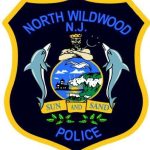SWAINTON – John Wesley United Methodist Church sponsored a historic African American cemetery tour Sept. 11, as part of its continuing 180th-anniversary celebration.
The tour began at the church, at 60 Goshen Swainton Rd., in Swainton, where guests were met by an interpretive talk, given by a person portraying John West, a runaway slave who founded the church in 1840.
The interpretive talks were created using primary sources to give a sense of what that individual was like and painted a picture of what life was also like during the church’s origins.
The church is not the original church founded in 1840. The new church was built at its present location in the early 1900s by West’s descendants, which is down the road from the original.
After the introduction and a peek at John West’s life, the tour continued outside, on the church’s grounds, where the tour “met” Mary Ann Selby through another interpretive talk. The tour learned Selby and her husband, James Selby, were the first people to be buried in the “new” graveyard.
After the tour through the first cemetery, the audience learned of Native Americans, several Civil War heroes, and even people with homemade headstones all buried at the site.
At each location on the tour, it was noted that not all the graves were uncovered yet. It has been an ongoing process trying to uncover most of them, in part due to being lost in the thick brush of the surrounding woods – many being military members.
Historian and tour guide Laurie Boyd-Thomas noted just how much history these people saw in their years, including, but not limited to, slavery, the Civil War, and even the turn of the century.
Next on the cemetery tour was the original location of the church on a small piece of land located deep inside Green Holly Campground.
The tour was joined by Joe DiAntonio, whose 1989 Eagle Scout project was uncovering the graves at the cemetery, cleaning them up, and erecting a flagpole for the American flag to fly over the fallen soldiers buried there.
It was noted at this cemetery that the communities around this time blurred the lines between Black and White. Most people came from other places in the nation that practiced slavery, so when free slaves came here, they were able to find work and go to school.
Also at this location, the tour was introduced to Ishmael and Julia Armour, Jacob and Emily Smith, the Manluffs, who owned a popular fruit grove nearby, and Olivia and Primus Smallwood to name a few.
The interpretive talk at this cemetery focused on Olivia Smallwood. Smallwood’s family was buried at this site. Her husband, Primus, was a former slave from North Carolina who later became a member of the military fighting for his family and freedom. Primus arrived at the New Jersey shore by sailing here, and he and Olivia married in 1871. One of their daughters grew up to be a nurse in New York City.
Most men at this site fought in the war and were members of the church, so they and their families were laid to rest there.
John West and his wife, Alcy, were also buried at this location; however, their headstones are missing because they were used as cornerstones for the church.
The last stop on the tour ended at Bethel Union Civil War Veterans Cemetery. At this location, new discoveries are constantly being made. Just recently, an entire family plot was found and is waiting to be uncovered.
Out of the 74 marked graves at the cemetery, only one of the buried men did not fight in the Civil War, but instead both World War I and World War II. It remains unknown how many total graves are on the site.
At this cemetery, the tour learned about many of the people laid to rest there, including the Rev. Edward Turner. Turner was a freed slave who owned a farm and was a preacher to the community. He was also responsible for running New Jersey’s version of the Underground Railroad, as slaves seeking freedom would often take refuge by hiding on his farm.
It was said he also helped move them from place to place using his wagon on his farm. Additionally, it is said he may have had ties to Harriet Tubman and her system, as well.
Children who are involved in the community’s builders club upkeep the cemetery grounds during all seasons, and even place American flags next to the graves of those who fought in the war.
Something worth noting about this location is that it is unique to have so many family plots at a veterans’ cemetery. Often, it is uncommon that military personnel are buried next to other family members due to designated cemeteries for them. However, it seemed to be the majority, in this case, who were laid to rest with their wives and children.
At each of the cemetery stops, the tour paid homage to those who served, with Nan LaCorte performing taps, followed by laying down flower bouquets on graves.
The tour was packed with information about the county’s history regarding African American communities, culture, and slavery during that time that many probably wouldn’t realize is here in southern New Jersey.
The tour was free and open to the public.
To contact Rebecca, email rfox@cmcherald.com.
Stone Harbor – Bob Ross thank you for all your years of volunteer service to the community of Stone Harbor. A Lifelong resident And property owner. 10 years on school board, 6 years on zoning board they can't…








